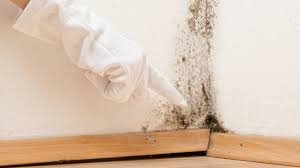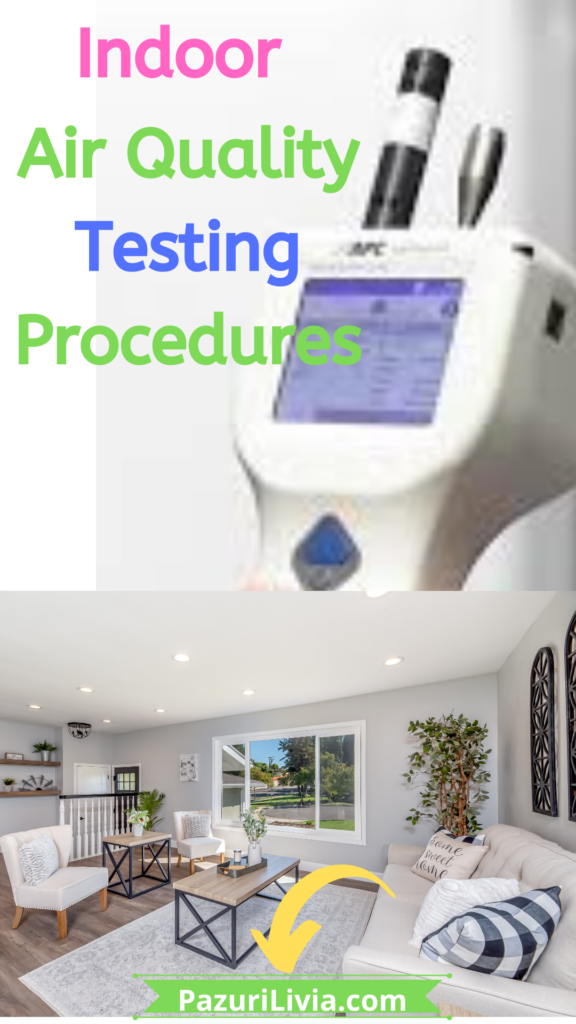Your home is where you spend most of your free time after work as you relax and interact with family and friends. Apart from making it clean and furnishing it with the best chairs and electronics, it’s imperative to ensure the quality of indoor air meets the recommended EPA standards. If you are not sure about the quality standards of your home indoor air, the best thing you can do is to have the air tested. In this guide, we shall discuss indoor air quality testing procedures to give you practical tips on how to test air quality in your home or office.
Table of Contents
Spending more time at home or in an office with poor indoor air quality can pose significant health problems to you and other occupants.
The most common health complications that you will likely notice as a result of poor indoor air quality are; coughing, sore throat, sneezing, runny nose, fatigue, dizziness, and allergic reactions.
That’s why having an indoor air quality test kit and understanding how to conduct indoor air quality testing and analysis is very paramount to homeowners so that they can know how to improve their indoor air quality.
What is Indoor Air Quality?
The term indoor air quality simply refers to the condition of the air in your home, office, or any other livable building structures. Indoor air quality has a direct impact on the health status, comfort, and the general well-being of the inhabitants.
Most common air contaminants that contributes to poor indoor air quality include; mold, allergens such as pollen and dust mites, smoke, cleaning chemicals, toxic gases and building materials, indoor heating systems among others.
Indoor Air Quality Testing Procedures
The methods of testing indoor air quality mostly vary from one region to another and depending on what substance is being tested. According to the Environmental Protection Agency (EPA), the four major indoor air pollutants are mold, radon, volatile organic compounds, and carbon dioxide.
Radon
Radon is a radioactive gas that is carcinogenic which is naturally produced by the decay of uranium deposits in the soil. It can easily be deposited on home spaces near house floors such as basements, pathways, crawl space, and cracked foundation slabs.
Although, no amount of radon gas is safe, EPS has a recommended threshold limit of four picocuries per liter abbreviated as 4 pCi/L.
Mold
Mold spores are also great contributors of poor indoor air quality. You can find both active and dead molds in your home or office buildings either in the attic, drywalls, or under the carpet.

Repeated exposure to molds can cause allergic reaction and they can be controlled by keeping your indoors properly ventilated and prevention of water damage such as flooding or leakage.
Although, there is no EPA recommended concentration levels for molds, you should be eliminated anytime you come across them in your home or office building.
Volatile Organic Compounds (Vocs)
Volatile Organic Compounds (VOCs) are a wide range of chemicals that are released by many products that we use on daily basis. It can be from petroleum-based products, degreasers, cleaners, and solvents.
Your house HVAC system, boilers, malfunctioning furnaces, furnishing, and home cleaning chemicals are the main sources of VOCs that interferes with the quality of your indoor air.
Once of the common form of VOCs that is tested when checking the indoor air quality is Formaldehyde. It has a recommended exposure limit value of 0.1 ppm TLV-TWA and 0.3 ppm TLV-STEL.
Carbon Dioxide
Carbon dioxide (CO2) is a naturally occurring compound in the air with an average outdoor concentration of 300-400 ppm. Frequent exposure to indoor spaces with high carbon dioxide levels often leads to headache and dizziness.
If high levels of carbon dioxide are detected (from 5,000 ppm and above) during indoor air quality tests, it serves as a sign that your house is poorly ventilated.
With the latest technological advancement, you can easily carry out an indoor air quality testing procedure at the comfort of your home or hire a professional home inspector.
The results generated will give you a better understanding of the current state of your indoor air and practical tips on how you can improve your indoor air quality.
The following are the indoor air quality testing procedures that should be followed when testing indoor air quality;
Gather Crucial Background Information about the Building Structure
The first procedure of testing indoor air quality is prepare a questionnaire that will help you get crucial background information about the building structure you are about to test. The questionnaire must ask questions regarding;
- The age of the building to identify whether is new or old
- The type of the building to ascertain whether it’s residential or commercial
- The ventilation systems used
- The building materials that were used when the building was being constructed
- If there any activities or equipment used within or nearby that releases air contaminants that may affect with the indoor air quality
- The number of people who work or reside in the building and their health background especially in diagnosis of air related respiratory diseases
- Discovery of mold, dust, or filthy smell within or around the building being tested
Once you get answers for these questions, you will have an idea of what are the main pollutants that might be affecting the quality of indoor air in that building or home. You will also understand the best indoor air quality testing method to use.
Identify the Ideal Testing Locations
Examine the building carefully and select several testing locations. More than one testing locations are recommended when testing indoor air quality since there are areas that are well ventilated and others with poor air circulation.
Select the Right Indoor Air Quality Sampling Method
The method chosen for indoor air quality testing varies depending on the most prevalent indoor air pollutant detected based once the survey questionnaire is carried out. Once the method has been selected, it’s imperative to collect multiple samples to reduce any chances of error during testing.
Here is how major indoor air pollutants are sampled.
Volatile Organic Compounds (VOCs)
The presence of VOCs pollutants such as formaldehyde is tested either indoor air sampling method, soil gas sampling by collecting samples around the building, or through sub-slab vapor sampling if there are chances of vapor intrusion which can be emanating from a subsurface.
Radon
Radon radioactive gas is odorless and naturally occurring from the decay of radioactive materials. The easiest method used to test the presence of Radon in your indoor air is by use of Radon test kits which are readily available. The EPA’s recommended concentration levels should be four picocuries per liter.
Molds
There are no EPA’s recommended concentration levels for molds as it’s easy to spot mold spores. For a better and deeper analysis, indoor air quality testing experts will take samples of your indoor and outdoor air concentration and take them to a microbiology laboratory for comparison.
If the results indicate that the indoor air sample has more mold spores than the outdoor air sample that will be a clear sign that there is mold growing inside your house or building.
Mold testing samples are collected by attaching air sampling cassettes to portable air sampling pumps that are battery powered.
Once a certain amount of air is drawn, the volume of air in every sampling pump will be calculated through flow-meter calibration and programming a sample time duration to the air pump.
If the source of moisture that is causing molds can be identified, dealing with this problem can be easy and you will minimize the chances of mold spores occurring in future.
2 Indoor Air Quality Sampling Methodologies
Depending on the air pollutant detected, one can choose either of the following two sampling methods where independent air quality screening levels are used.
Soil gas sampling method
In this method, the sub-slab and exterior soil gas samples are compared to the set Soil Gas Screening Levels (SGSLs). Each screening level has a threshold for each of the targeted air pollutants.
If the recommended thresholds are not reached at or exceeded, there is no need for further analysis as the current state of vapor intrusion is within the recommended levels. In the event that the screening levels are exceeded, a lab analysis of the sub-slab soil gas sampling is recommended.
Indoor air sampling method
Here, indoor sampling results are equated to set Indoor Air Screening Levels (IASLs). Always compare your levels to that of official national regulatory authority to ensure you are reading from the same page since the recommended screening levels keep on changing over time.
Obtaining Indoor Air Quality Assessment Report
The final step of indoor air quality testing procedure is taking the samples collected to a laboratory for in-depth analysis.
Once the samples are analyzed, a report will be generated that indicates the accurate status of your indoor air quality. If your indoor air quality is poor, the report will also provide actionable recommendations on how to improve indoor air quality.
Common Indoor Air Quality Testing Equipment
There are different equipment used to test indoor air quality. If you want to test the quality of indoor air in your home by yourself, there are varieties of indoor air quality testing kits available in the market.
Other equipment used to test indoor air quality include;
- CO2 meter- To measure the average levels of Carbon Dioxide
- Thermo- Hygrometer- To measure room temperature and humidity
- VOC meter- To measure a wide variety of Volatile Organic Compounds (VOCs)
- Swab tests- To test molds and bacteria
- Moisture meter- To measure the moisture levels
- Particle counters and dust monitors machines
Tips on How to Improve Indoor Air Quality
If you have been struggling with poor indoor air quality, we believe the above indoor air quality testing procedures will help you identify the most prevalent air pollutants in your home or office so that you can come up with the most appropriate method of dealing with it.
The following are simple tips that you can implement to improve air quality in your home.
- Control the sources of air pollution. Get rid of wet spots, pet dander, chemicals, exhaust from cars, appliances, and keep your house clean.
- Keep your home well ventilated to increase airflow within your home
- Regulate the humidity levels to range between 30 and 50 percent
- Change home conditioning system air filters frequently to avoid clogging
- Use the most appropriate type of air purifiers in your home or office to regulate or minimize the indoor air pollution.
Pin it on Pinterest!


